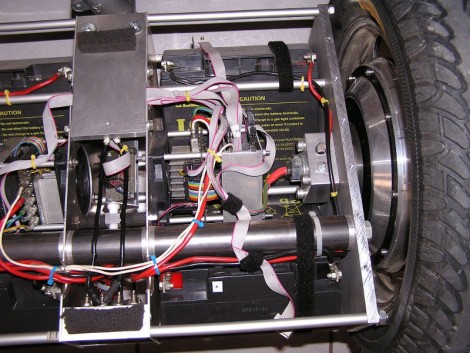
This is a picture of the guts of a diy Segway project (translated). Everything fits into a tiny space under the platform upon which the rider stands. It’s tight, but makes for a sleek look when the diamond plate is covering up all of the internals.
An ATmega644 controls the vehicle. It does so by using a PID control scheme to monitor a gyroscope, driving the wheels to maintain the center of balance. Electronically, the most complicated part of the build is the motor controller. It seems to be an original design, using an ATmega48 and several other integrated circuits. It was hard for us to figure out how this was implemented, but with some intensive study of the three schematics that go into the module we’d bet you can get to the bottom of things. We certainly like the outcome, as this personal transport is whisper quiet. Take a look at the clip after the break to hear for yourself.
Note: Be careful if you’re reusing the code from the translated link at the top. Google translator also translates the variable names in the code and might break how it works due to inconsistencies in the translation.














